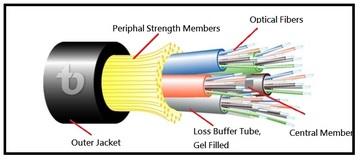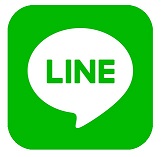-
Loose Tube Type 鬆式型光纖纜線 Self-Supporting Type 自持型光纖纜線 Tight Buffer (Break-out) Type 緊式型光纖纜線 Special Standarder Type 特殊安規型光纖纜線 FTTH 光到府型光纖纜線 回上一頁 -
產品搜尋
首頁 > 宜大-光纖專區(Optical Fibers)> 玻璃光纖Glass Fiber > Self-Supporting Type 自持型光纖纜線

TLD-ADS-F


進口Teldor ADS系列自支撐型室外鬆式光纖纜線
APPLICATIONS
The “All Dielectric Self-Supporting (ADSS)” cables are designed for aerial self-supporting applications at short, medium and long span distances.
Teldor ADSS cables offer a rapid and economical means for deploying optical fiber cables along existing aerial rights-ofway. They are being deployed by cable television operators, telephone companies, municipalities and emerging network operators, in addition to electric power utilities.
CABLE DESCRIPTION
The ADSS cable consists of a number of tubes/elements according to the specified number of fibers. The elements are usually fiber-containing tubes; however fillers may be used to preserve the cable geometry.
Two to twelve color-coded fibers are loosely laid in each tube which is filled with a water-blocking gel. The tubes are stranded around a dielectric central strength member and bound in a jacket.
A water-swelling tape is helically wrapped around the cable core. Aramid yarn strength members are helically laid to supply peripheral strengthening of the cable. The outer jacket is tightly bound over the aramid yarn layer. For long span applications a double jacket design can be considered. A ripcord is located under each jacket layer to facilitate its removal.
For up to 30 fiber cables, the “ADSB” design is applicable, for 32-144 fibers the “ADSC” design is applicable. Dry cable designs, ballistic protection and other cable designs are available upon request.
STANDARDS
• Cables are designed for aerial installation according to IEEE-P1222
• Cables tested according to TIA/EIA-455 and IEC-60794-1-2. For details see Test Methods Table.
• Cables meet or exceed Telcordia (Bellcore) requirements for outside plant cables (GR-20) when the appropriate options are chosen.
MECHANICAL PROPERTIES
Typical properties are given in the Mechanical Properties Table. Actual properties depend on the cable construction.
The tensile load and sag of the cables at different wind conditions is given in the attached Table for several key cable configurations.
OPTICAL PROPERTIES
See the Optical Properties Table.
MATERIALS
See information about the materials used in the Teldor
Fiberoptic Cables.
MARKING
Cables are marked as follows
Teldor - Fiberoptic Cable - Cable Code - RoHS - Length in Meters
or per customer request.
CABLE DIMENSIONS AND WEIGHTS
See list of most frequently ordered cables next page.
ORDERING
You can find the desired cable in the cable list next page or compose your own cable from the Cable Code Definition and Selection Guide.
Standard cable lengths vary with cable diameter. Other constructions, color codes and materials may be available.
Please contact the Teldor Marketing Department.
Typical Mechanical PropertiesMax. Operating Load Per Installation Table for ADS Cables (see below) Max. Compressive Load 4000 N Repeated Impact 4.4 N.m (J) Minimum Bending Radius for Installation 20 times the cable O.D. Minimum Long Term Bending Radius 10 times the cable O.D. Twist (Torsion) — Length 180°x10 times , 125 times the cable O.D. Cyclic Flexing 100 cycles Operating Temperature Range -40°C to +70°C (With PE jacket) Storage Temperature Range -50°C to +70°C (With PE jacket)
線材剖面
下單資訊
keywords: corning, 康寧, All Dielectric Self-Supporting Fiberoptic Cable 自支撐型鬆式光纖纜線, adss, IEEE-P1222, google,2024/5/16 上午 08:09:00
- YEIDA宜大電線有限公司
- 宜大(YEIDA) 為美國 BELDEN and ALPHA 公司 代理商 (經銷商)
- E-mail: yeida.lin@msa.hinet.net
- E-mail : yeida@ms79.hinet.net
- TEL:(02)2995-4668(代表號) FAX:(02)2278-1798
- 地址:新北市三重區重新路五段639之1號9F
網站所採用資料及圖檔皆屬各公司所有, 本公司決無侵權之意,如有造成不便,請聯絡本公司










